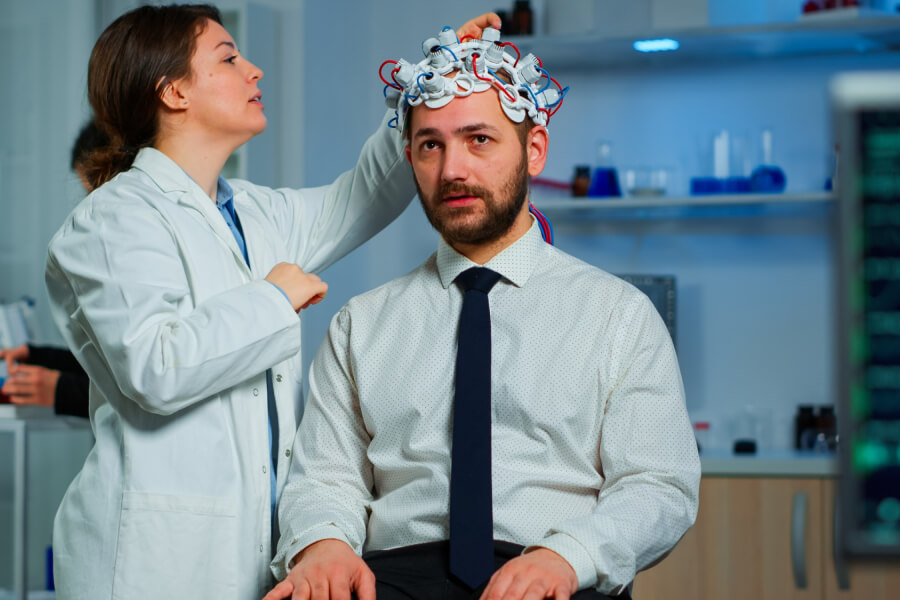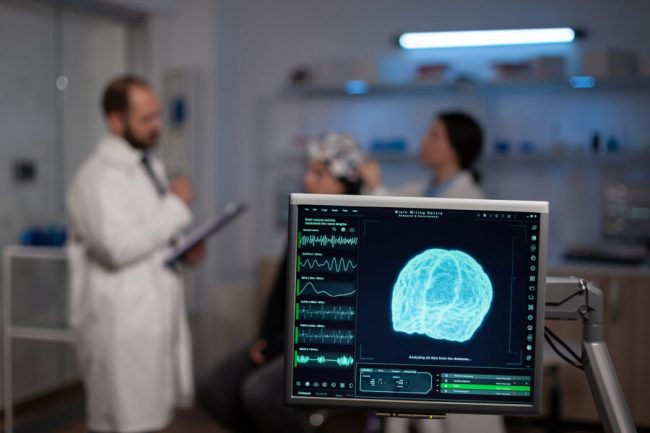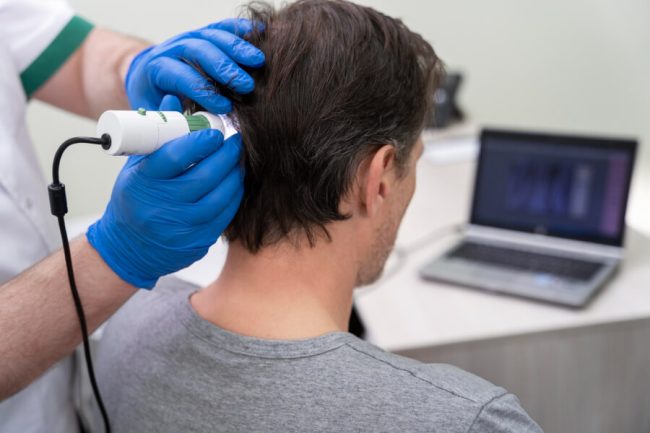A cerebral aneurysm can sound frightening, but understanding what it is, how it’s diagnosed, and the treatment options available can help in understanding this condition.
Let’s go through the essentials of cerebral aneurysms, from the first symptoms to look out for to the latest treatment options, and what exactly is Cerebral Aneurysm.
Whether you’re researching for yourself or a loved one, we’ve gathered all the information you need in one place, explained in an easy-to-understand way.
Understanding Cerebral Aneurysms
A cerebral aneurysm occurs when a blood vessel in the brain weakens and bulges outward like a balloon. While it may not cause immediate harm, if the aneurysm ruptures, it can lead to bleeding in the brain, which is a life-threatening medical emergency.
Cerebral aneurysms can vary in size, and not all aneurysms rupture. Some people live with them without any problems, but the risk is always there. That’s why it’s important to understand what to look for and how to get proper diagnosis and treatment.
Risk Factors for Developing a Cerebral Aneurysm
While anyone can develop a cerebral aneurysm, some factors increase the risk, including:
- Family history: A higher risk if close relatives have had aneurysms.
- High blood pressure (hypertension): Puts extra stress on blood vessel walls.
- Smoking: Damages blood vessels and increases aneurysm risk.
- Age: Most common in people aged 40 and above.
- Gender: Women are more likely to develop cerebral aneurysms than men.
- Drug use: Cocaine and other stimulants can significantly raise the risk of an aneurysm.
Understanding your personal risk factors can help you and your healthcare provider take steps to reduce the likelihood of an aneurysm forming or rupturing.
Diagnosis of Cerebral Aneurysms
Many people don’t realize they have an aneurysm until it ruptures, but there are symptoms that may indicate an unruptured aneurysm:
- Sudden, severe headaches (often described as the “worst headache of your life”).
- Blurred or double vision.
- Pain above or behind the eye.
- Difficulty speaking.
- Numbness or weakness on one side of the face or body.
- Seizures.
If you experience these symptoms, especially in combination, it’s important to seek medical attention immediately. A ruptured aneurysm presents symptoms like sudden nausea, vomiting, stiff neck, and loss of consciousness, requiring emergency care.
Diagnostic Tests to Detect Cerebral Aneurysms
Once symptoms are noticed or if someone is at high risk, doctors may recommend several diagnostic tests to confirm the presence of a cerebral aneurysm:
- CT Scan (Computed Tomography): A quick and non-invasive scan that can detect bleeding in the brain, which may indicate a ruptured aneurysm.
- MRI (Magnetic Resonance Imaging): This gives more detailed images of the brain and blood vessels, helping to detect aneurysms that haven’t ruptured.
- Cerebral Angiography: An advanced test where dye is injected into the bloodstream, and X-rays track how blood flows through the brain, pinpointing the location of the aneurysm.
Treatment Options
Medical Therapy for Managing Cerebral Aneurysms
If an aneurysm is detected but hasn’t ruptured, your doctor may recommend non-surgical treatment options like:
- Blood pressure management: High blood pressure can increase the risk of rupture, so medications may be prescribed to keep it under control.
- Lifestyle changes: Quitting smoking and reducing alcohol intake are important steps to decrease the risk of rupture.
Surgical Procedures: Clipping and Coiling
For aneurysms at risk of rupture, two main surgical treatments are often considered:
- Clipping: In this procedure, a neurosurgeon places a tiny clip at the base of the aneurysm to stop blood from entering it. This prevents rupture and is a well-established procedure with a high success rate.
- Endovascular Coiling: A less invasive alternative where a catheter is inserted through the blood vessels to the aneurysm. Tiny platinum coils are placed inside the aneurysm, promoting clotting and preventing blood flow into the aneurysm.
Both procedures have their risks and benefits, and the choice often depends on the aneurysm’s size, location, and the patient’s overall health.
Emerging Treatment Options and Technologies
Recently, new techniques are being developed to treat aneurysms more effectively and with less risk. One of these is flow diversion, a procedure that uses a device to divert blood away from the aneurysm, allowing it to heal naturally over time. This is a promising option for complex aneurysms that are difficult to treat with clipping or coiling.
Recovery and Prognosis
Outlook for Patients with Both Ruptured and Unruptured Aneurysms
The prognosis for individuals with an unruptured aneurysm is generally good, especially with early detection and proper treatment. For ruptured aneurysms, the recovery process can be more complicated. About 50% of people survive a ruptured aneurysm, and those who do may experience long-term effects like memory loss, speech difficulties, or physical disabilities.
Long-Term Care and Monitoring
Even after successful treatment, individuals with cerebral aneurysms need to have regular check-ups. Imaging tests may be needed every few years to ensure the aneurysm isn’t recurring or new ones aren’t forming.
Prevention and Lifestyle Management
Strategies to Reduce the Risk of Developing a Cerebral Aneurysm
While some risk factors like age and genetics are out of your control, others can be managed to reduce the likelihood of an aneurysm forming:
- Keep blood pressure in check: Regular monitoring and treatment for hypertension can prevent aneurysms from forming or rupturing.
- Quit smoking: Smoking damages blood vessels and increases the risk of aneurysms.
- Eat a healthy diet: A balanced diet low in sodium and cholesterol helps maintain blood vessel health.
Lifestyle Changes for Individuals with a Family History of Cerebral Aneurysms
If you have a family history of aneurysms, early screening might be recommended. Reducing risk factors through a healthy lifestyle can be a preventive measure. Also, avoid excessive alcohol use and stimulant drugs, which can increase aneurysm risk.
Latest Research and Innovations
New Advancements in Diagnosis and Treatment
Ongoing research is exploring better ways to detect and treat cerebral aneurysms earlier and more effectively. New imaging techniques, like 3D angiography, offer more detailed pictures of the brain’s blood vessels, while minimally invasive procedures like flow diverters are paving the way for less risky treatments.
Clinical Trials and Studies Exploring Novel Approaches
Clinical trials are continuously being conducted to develop new treatment methods. If you’re diagnosed with an aneurysm, talk to your healthcare provider about any ongoing trials that might be a good fit for you.
Support and Resources for Cerebral Aneurysms
If you or a loved one is dealing with a cerebral aneurysm, you’re not alone. Many organizations, such as the Brain Aneurysm Foundation, provide resources and support groups where you can connect with others facing similar challenges.
For more information, your healthcare provider can recommend reputable sources for up-to-date information on cerebral aneurysms, including hospitals, neurosurgery centers, and patient advocacy groups.
Conclusion
Cerebral aneurysms are a serious condition, but with early detection and the right treatment plan, many people can live healthy lives. Staying informed about the diagnosis, treatment options, and lifestyle changes can help you manage your health and reduce the risks.
FAQs
How to diagnose a brain aneurysm?
Brain aneurysms are typically diagnosed through imaging tests such as CT scans, MRIs, or cerebral angiography.
What is the life expectancy of a person with a brain aneurysm?
Life expectancy depends on whether the aneurysm has ruptured and how quickly it is treated. Unruptured aneurysms often have a good prognosis with proper care.
What should you avoid when you have a brain aneurysm?
You should avoid smoking, heavy alcohol use, and activities that elevate blood pressure.
Can you treat a brain aneurysm without surgery?
Small, unruptured aneurysms may be managed with medication and lifestyle changes, but larger aneurysms often require surgical intervention.







